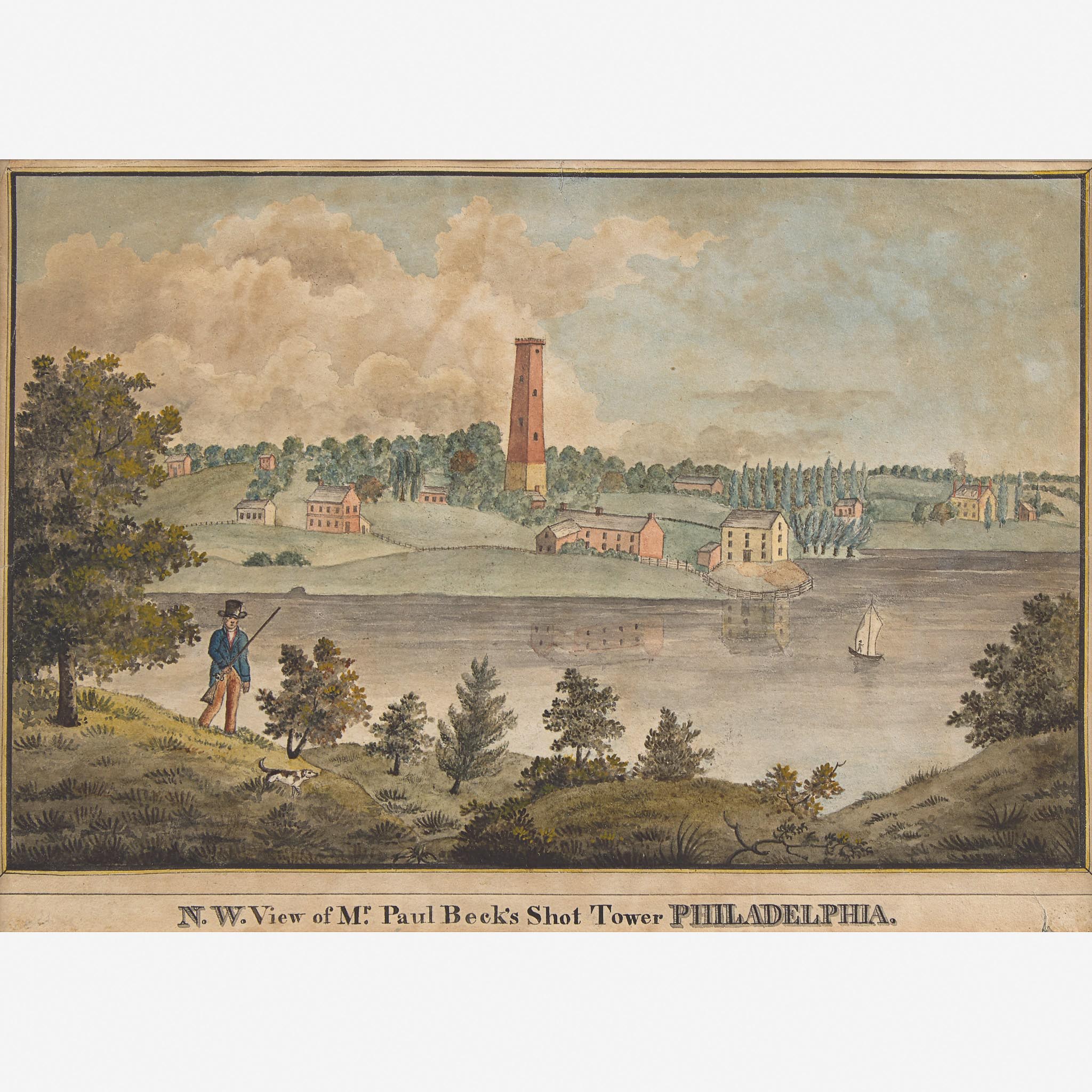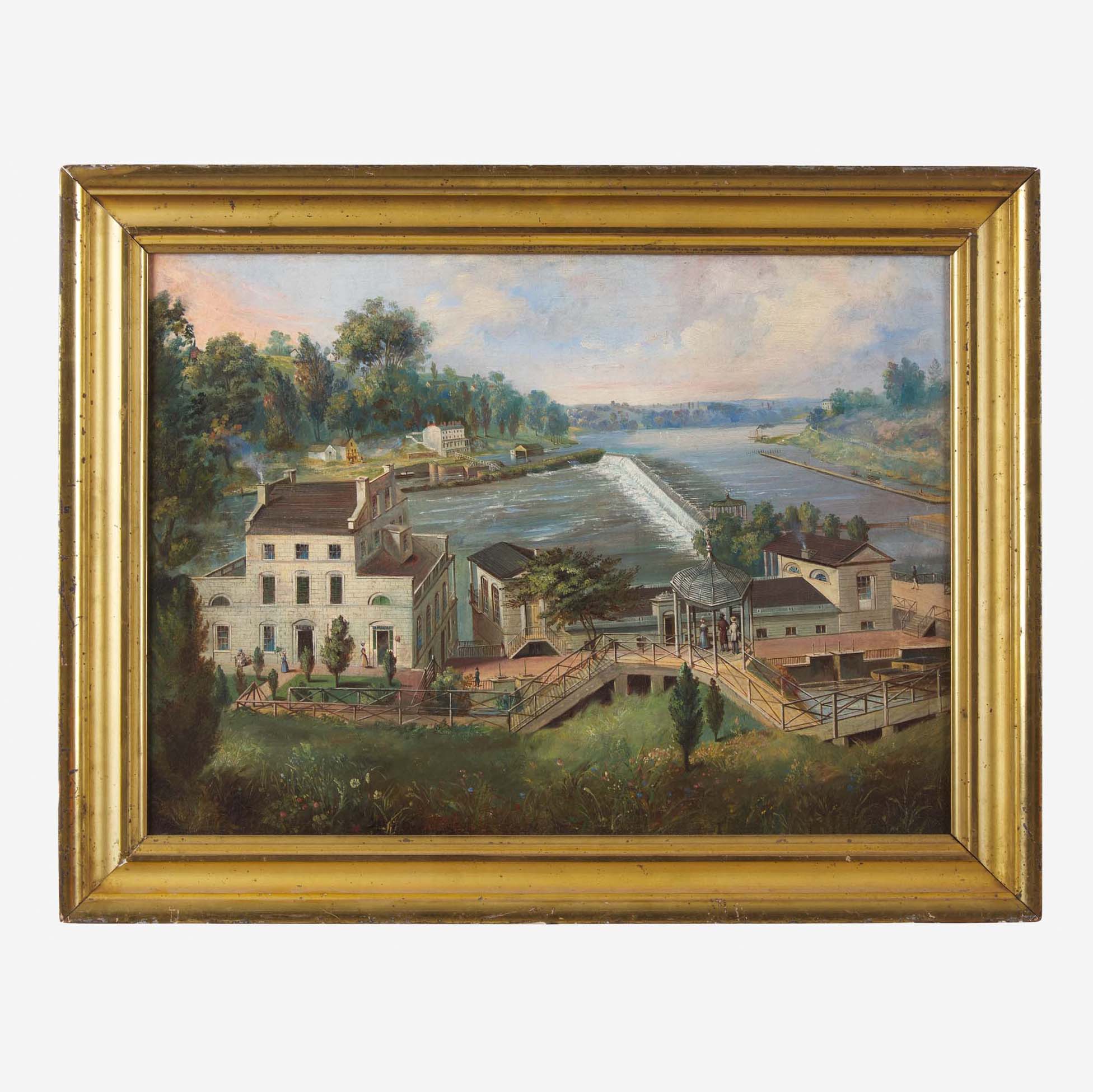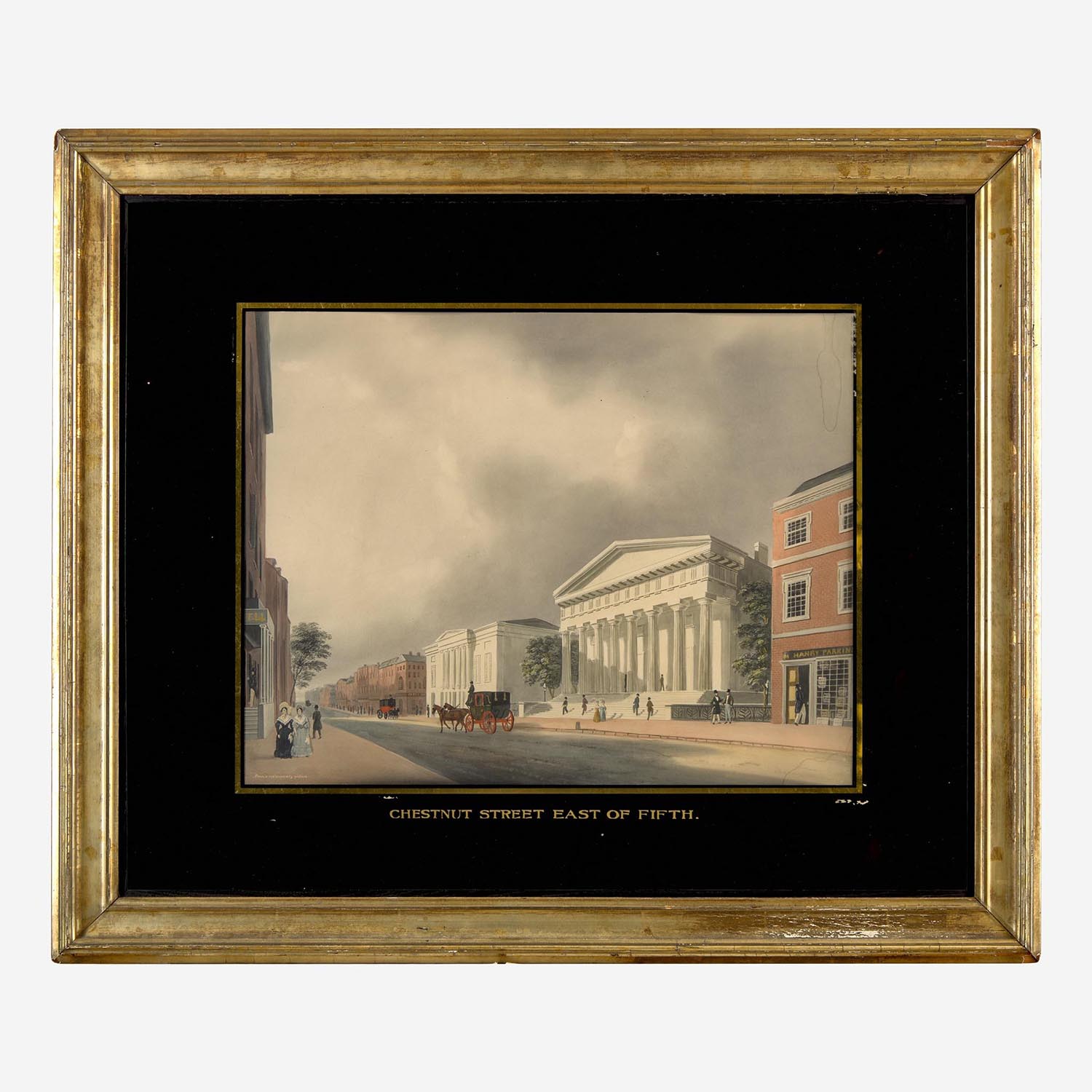Philadelphia Views: Picturing the 19th Century
On offer at Freeman's November 10
Freeman's American Furniture, Folk and Decorative Arts specialists highlight works that guide us through the 19th century in Philadelphia.
11/01/2021 News and Film, American Furniture, Folk and Decorative Arts
Freeman’s November 10 American Furniture, Folk and Decorative Arts auction offers a window into the customs, politics, and design sensibilities of early America—and perhaps nowhere were the shifting tides of early American statehood more deeply felt than in Philadelphia. Both the nation’s birthplace and, for a time, the nation’s largest city and busiest port, Philadelphia’s development gives us many keys to understanding large-scale industrialization and migration in the United States as a whole.
Five works in American Furniture, Folk and Decorative Arts shed light on Philadelphia’s development throughout the 19th century—works that Lynda Cain, Head of Freeman’s American Furniture, Folk and Decorative Arts department, calls “remarkable historical documents.” These landscapes, Cain says, “communicate the significant commercial, technological, and cultural role of Philadelphia in the nation’s history. The quality of many of the painted, sketched, and engraved views of the city remind us that Philadelphia was the center of American painting and printing in this period, and the sheer number of Philadelphia views found in family and institutional collections acknowledges the value placed upon these works by contemporary consumers across the nation and abroad.”
Philadelphia at the Turn of the Century
Hand-colored engravings by William Russel Birch and Thomas Birch illustrate the kinds of scenes that continue to captivate viewers’ imaginations more than two hundred years after their creation. The engravings offer nine views of Philadelphia, most of them in and around what we now know as Old City (Lot 83; estimate: $5,000-8,000). Picturing Philadelphia at the very beginning of the 19th century, these landscapes offer a fascinating glimpse into some of the internal contradictions of the time period: in one lively scene of 2nd and Market, dozens of people gather on foot, on horseback, and seated in circles; in another, a woman and child stand in the middle of an otherwise entirely vacant Chestnut Street.
Lot 83 | William Russell Birch and Thomas Birch, Nine Views of Philadelphia, "The City of Philadelphia, In the State of Pennsylvania North America; As it Appeared in the Year 1800" | $5,000-8,000
Lot 83 | William Russell Birch and Thomas Birch, Nine Views of Philadelphia, "The City of Philadelphia, In the State of Pennsylvania North America; As it Appeared in the Year 1800" | $5,000-8,000
A slightly more pastoral landscape of Philadelphia as it appeared at the turn of the 19th century is N.W. View of Mr. Paul Beck’s Shot Tower, Philadelphia, 1800 (Lot 163; estimate: $1,500-2,500). This American School ink and watercolor on paper likewise illustrates the time period in all its complexity, revealing a peaceful scene of the Schuylkill River and the rolling hills behind it—punctuated by a soaring shot tower in the distance. The tall brick structure was built by a merchant named Paul Beck, who, for a time, helped supply the city with ammunition during the War of 1812. By 1828, demand for ammunition plummeted and Beck closed his shot tower, with no inkling of the conflict that was to beset the nation later in the century.
Lot 163 | American School 19th Century, N.W. View of Mr. Paul Beck's Shot Tower, Philadelphia, 1800 | $1,500-2,500
Mid- to Late-19th Century Views
Jump across the Schuylkill and ahead in time a few decades for another view of Philadelphia, this time a View of Fairmount Water-Works with Schuylkill in the Distance, circa 1840 (Lot 164; estimate: $15,000-25,000), a framed oil on canvas. The scene—likely familiar to Philadelphians who go for a weekend stroll or bike ride along Kelly Drive—highlights the city’s early urban amenities and engineering achievements. Philadelphia’s general water supply system was the first of its kind in the nation, with Fairmount Water Works at its heart. By the middle of the century, the Water Works was delivering an average of 5.3 million gallons of water per day to its customers, a true technological feat for its time. The creation of the Water Works led to developments beyond engineering: this lush landscape was painted from the vantage point of what is now the Philadelphia Museum of Art.
Lot 164 | American School 19th century after John T. Bowen (c. 1801-1856), View of Fairmount Water-Works with Schuylkill in the Distance, circa 1840 | $15,000-25,000
Two works help us close out the 19th century: Chestnut Street East of Fifth, late 19th century (Lot 165; estimate: $1,500-2,500), an American School landscape, and Charles H. Wells’s A Philadelphia Corner House (Lot 228; estimate: $2,000-3,000). The buildings highlighted in these scenes—stately and solid, rendered in brick or with imposing columns—are instantly recognizable as Philadelphia constructions. The city was referred to as the “Athens of America” as early as 1783, and these scenes help to illustrate why: the city was easy to navigate, laid out on a grid between two rivers, the major streets lined with stylish brick or stone homes and classically inspired public and institutional buildings. Though both scenes were executed in the mid- to late-19th century, many of the cornerstones of such building and city-planning techniques are still visible in the Philadelphia of the 21st century—a testament to their timelessness.
Lot 165 | American School 19th Century, Chestnut Street East of Fifth, late 19th century | $1,500-2,500
Lot 228 | Charles H. Wells (1832-1884), A Philadelphia Corner House | $2,000-3,000
View the rest of our November 10 American Furniture, Folk and Decorative Arts auction.
VIEW LOTS
Have something similar? Get in touch with our American Furniture, Folk and Decorative Arts department to request a complimentary auction estimate.
REQUEST AN ESTIMATE
ff.jpg)




